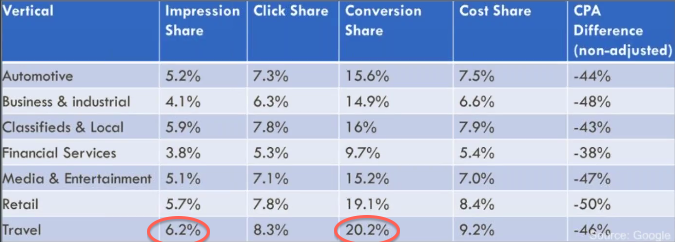As part 3 in the follow up series to our Digital Predictions 2017 eBook and Webinar, we have zoomed in on the next area marketing experts are talking about: Audience Targeting.
Joe Girard is known as America’s greatest salesman. He sold 13001 cars between 1963 and 1978 for Chevrolet, setting the world record for most cars ever sold. He could sell a car to anyone who came through the dealership doors and wrote a well-known book about just that titled How to Sell Anything to Anyone. Knowing how to read each potential customer, Joe knew exactly what to say to get them into a brand new Chevy – he knew how to target his audience.
Fast forward to the digital economy of 2017. The way that people buy products and services has evolved drastically, along with the ways that companies sell to them. Advertisers now rely on sophisticated audience monitoring and management technology across digital platforms and publisher networks to keep track of customers. Insight into the customer journey gives marketers the ability to figure out what is the best thing to say to get that customer to buy. Welcome to audience targeting.
The ultimate goal of audience targeting is to give the right person, the right message at the right time, but marketers need data to do that. This is one of the challenges of audience targeting. However audience targeting can also be simplified. A lot comes down to segmenting your audience into different lists and uploading these lists onto a desired ad platform. For example, divide a list of newsletter subscribers into those that open the newsletter and those that don’t. Then upload that list of newsletter subscribers that don’t open emails to Facebook and target these users with a new message, something that will get their attention and make them want to interact with your brand again.
The ability to customize an audience and target them with a specific message makes marketers look good. This process can reduce customer message overload and redundancy by making sure the same customer doesn’t always see the same thing from your brand, in turn driving more conversions. And this year, audience targeting is getting better than it’s ever been! In this post we’ll look at the role of attribution modelling and what audience targeting is capable of before closing with what marketers can expect in the coming year.
Attribution Modelling and Audience Targeting – One in the Same
The process of attributing value to different stages of the customer journey is known as an attribution modelling, often the missing link when it comes to audience targeting for marketers. Brad Geddes, Cofounder of AdAlysis, presented first in our webinar and says “An attribution model is the rule, or set of rules, that determines how credit for sales and conversions is assigned to touch points in conversion paths.” Without someone actually managing the users who come to your website and properly attributing value to them, there is no way to make use of audience targeting systematically. In this sense audience targeting and attribution modelling and management are somewhat the same.
Marketers have to think about what data points and what parts of their customer’s journey they should be measuring in a way that makes the most sense for their business. Attribution models can vary to be position-based, linear or to focus on time decay for example. Search Engine Land wrote a great article that discusses the different attribution models and when to apply each. While attribution modelling can become complex, the results can be very rewarding.
During the webinar, Brad gave an example of how important attribution modelling is based on search ad data from last year focusing specifically on the travel industry.

He showed that for this particular analysis, the travel industry was getting 6% of their impressions from attribution modelling. Meaning someone had been on the website of a particular travel company and was now being shown a paid ad for that same company during their next Google search query based on some form of attribution modelling and management. In this same example, that 6% of impressions due to attribution modelling and subsequent audience targeting, actually made up 20% of their conversions! Other industries have seen results even more significant than this.
The Next Wave of Audience Targeting Starts..Again..with Facebook
The ability to define and target an audience hasn’t always been what it is today. Marketers used to just upload an email and a phone number and that was that. During our Facebook webinar, Lee Goldberg of Vector Media Group, stated that there are now over 970 variables available to marketers for Facebook audience targeting with ads. That makes sense considering Facebook was the first to roll out custom audiences back in 2012.
Today marketers are already riding the next wave with Facebook’s Advanced Audience Targeting. Audiences can now be created not only based on behavior online, but also behavior offline! For example an automotive rust-proofing company could target users who just bought a car.
Facebook allows advertisers to get even more granular than this when it comes to audience targeting. However, marketers have to mind how specific they get. If a target audience is too small marketers risk message-overload with the same user, by targeting them too often with the same ad. This is a case for ongoing audience attribution and management.
Marketers can begin audience targeting on Facebook easily. The first step is gathering an audience list from another marketing channel, like the list of newsletter subscribers. The next step is to upload this list onto Facebook. From here marketers can ask Facebook to build them a “lookalike audience.” The bigger the initial list is, the more qualified the lookalike audience will be. Marketers can also make use of ad management tools to cross reference lists from AdWords campaigns to Facebook for example or even to manage audience targeting across many client’s Facebook pages all at once.
Powerful Audience Targeting Techniques and Predictions
Our second webinar presenter Anders Hjorth, Digital Marketing Strategist and Partner at Altima, walked us through the power of audience targeting. He says that marketers who make use of audience targeting have a couple advantages. These marketers can make use of lookalike audiences as a powerful tool for remarketing. In turn they can effectively reactivate dormant community members. However for this to be the case, the site in question would have to already be getting traffic and collecting data. Of course, Anders also provided Acquisio with some powerful insights for audience targeting in 2017. Here’s what marketers can expect:
-

Screenshot of Acquisio 2017 Digital Predictions Webinar Better Match Rates – As marketers get better at targeting audiences, they’ll get better match rates and as a result will be able to speak to a greater number of prospects strategically. Match rates are supported by making use of general and advanced audience exclusion capability. The best type of audience exclusion depends on the campaign. For example if you’re running an event promotion campaign on Facebook, you could exclude existing registrants.
- Higher Penetration of Marketing Messages – Using advanced targeting techniques, like lookalike audiences, marketers can now penetrate the market even further and reach customers more effectively.
- Better Audience Management – This year marketers are going to get improved technology to better manage audience data. Acquisio has all-in-one solutions to support audience tracking, Google now has conversion tracking based on attribution models and this is just the beginning.
During our Digital Predictions webinar, both Brad and Anders touched on the notion that marketers have somewhat failed at effective advertising, because of the high number of ad blockers put in place by internet users. If audience targeting is widely adopted and effectively implemented, the hope is that the adoption of ad blocking technology would decrease – an exponential win. If there is less ad blocking, there will be more eyes on ads and more investment in these channels. When it comes to audience targeting, whether advertiser or consumer, we all have something to gain.
Image Credits
Feature Image: Unsplash/Yvette de Wit
Screenshots by Chandal Nolasco da Silva. Taken February 2017.



